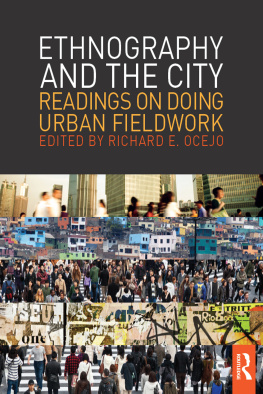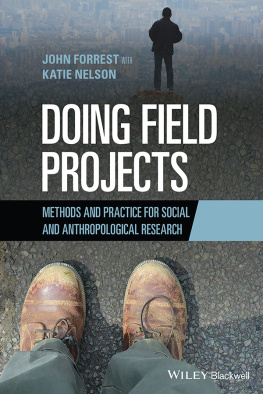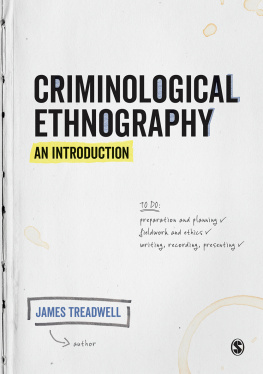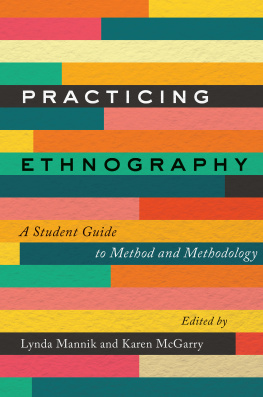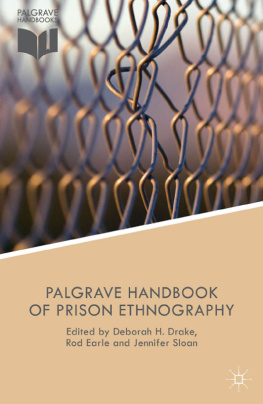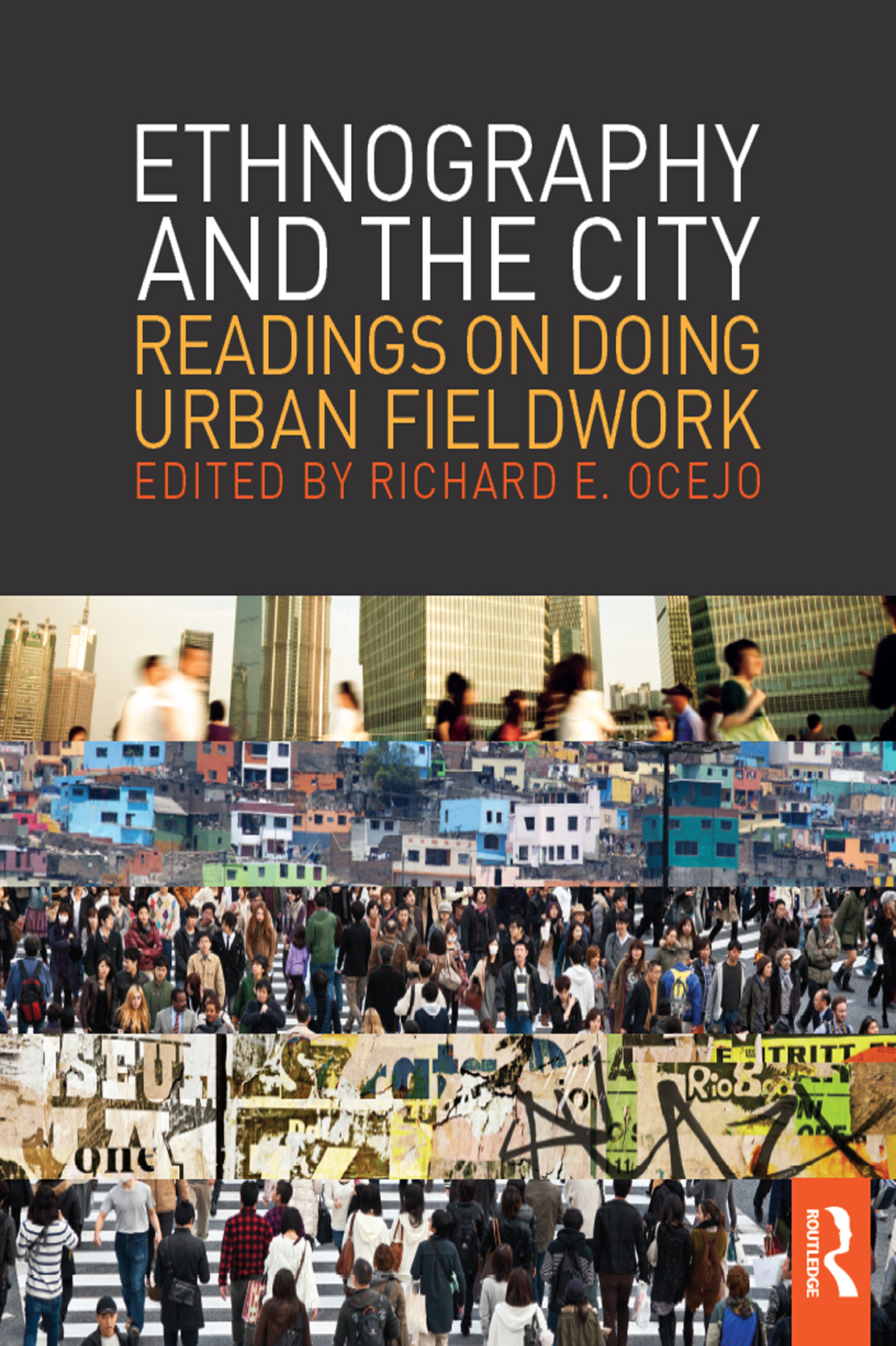The only collection of its kind on the market, this reader gathers the work of some of the most esteemed urban ethnographers in sociology and anthropology. Broken down into sections that cover key aspects of ethnographic research, Ethnography and the City will expose readers to important works in the field, while also guiding students to the study of method as they embark on their own work.
This series brings original perspectives on key topics in urban research to todays students in a series of short accessible texts, guided readers, and practical handbooks. Each volume examines how long-standing urban phenomena continue to be relevant in an increasingly urban and global world, and in doing so, connects the best new scholarship with the wider concerns of students seeking to understand life in the 21st-century metropolis.
Ethnography and
the City
Readings on Doing Urban
Fieldwork
Edited by
Richard E. Ocejo
John Jay College of Criminal Justice, CUNY

First published 2013
by Routledge
711 Third Avenue, New York, NY 10017
Simultaneously published in the UK
by Routledge
2 Park Square, Milton Park, Abingdon, Oxon OX14 4RN
Routledge is an imprint of the Taylor & Francis Group, an informa business
2013 Taylor & Francis
The right of the editor to be identified as the author of the editorial material, and of the authors for their individual chapters, has been asserted in accordance with sections 77 and 78 of the Copyright, Designs and Patents Act 1988.
All rights reserved. No part of this book may be reprinted or reproduced or utilized in any form or by any electronic, mechanical, or other means, now known or hereafter invented, including photocopying and recording, or in any information storage or retrieval system, without permission in writing from the publishers.
Trademark notice: Product or corporate names may be trademarks or registered trademarks, and are used only for identification and explanation without intent to infringe.
Library of Congress Cataloging-in-Publication Data
Ethnography and the city : readings on doing urban fieldwork / [edited by] Richard E. Ocejo.
p. cm. (Metropolis and modern life)
1. Urban anthropologyFieldwork. I. Ocejo, Richard E.
GN395.E7 2012
307.76dc23
2012022256
ISBN 13: 978-0-415-80837-8 (hbk)
ISBN 13: 978-0-415-80838-5 (pbk)
Typeset in Sabon and Helvetica Neue
by Swales & Willis Ltd, Exeter, Devon
CONTENTS
From his classic work The Urban Villagers, in this selection Herbert Gans analyzes how an Italian-American community reacts to impending displacement. By living in their Boston neighborhood Gans discovers how the primacy of the family and peer group in the lives of these working-class Italians and the urban village community that they constructed influences their inaction against displacement and the destruction of their neighborhood.
This piece showcases how Philippe Bourgois immerses himself in East Harlem (El Barrio) to understand the daily struggles and hardships of families and children in this dangerous and unstable environment. From living in the neighborhood and having a young son, Bourgois learns both the important role that children play among residents, as well as the harsh realities that they and their mothers face.
In this selection Richard Lloyd takes us inside the gentrifying Chicago neighborhood of Wicker Park to show how a bohemian aesthetic and work ethic gets contested within and integrated into a commercial nightlife scene. By living in Wicker Park and participating in its arts scene, Lloyd discovers the importance of leisure spaces in its construction and in transforming it into a postindustrial neighborhood of cultural production.
Seeing herself as a gentrifier in North Kenwood-Oakland, Mary Pattillo examines the intra-racial conflicts between newcomers and existing residents that emerge in a neighborhood experiencing black gentrification. As one of the newcomers against whom working-class residents show wariness and hostility, her work demonstrates the difficulties ethnographers face in immersing themselves in their field sites.
This piece pushes the community study beyond the boundaries of the urban neighborhood as Gina Perez goes to Humboldt Park in Chicago as well as San Sebastin in Puerto Rico to examine the transnational lives and identities of Puerto Rican migrants. An example of multi-sited ethnography, Perezs study highlights the importance of immersion across spatial boundaries to experience and understand the impact of social contexts and spatial and cultural distance on peoples lives.
Along with his extensive observations of vendors, Mitchell Duneier also gets behind the table to see the sidewalk from their perspective. In this selection he demonstrates the complex relationship between the police and the vendors when he creates a situation through which an officer confronts him.
Peter Moskos in this study goes through the Baltimore police academy and becomes an officer for a year. He provides a first-hand account of the varying perspectives and interpretations of their duties and decisions that officers make while policing in the inner city.
In this study David Grazian discovers the multiple interpretations that different actors have of authenticity in blues clubs. This piece shows how he uses his own musical abilities on the saxophone to reveal how a community of blues club regulars construct notions of authenticity and socialize people into the group.
As Jonathan Wynn shows, walking tour guides use storytelling tricks to weave imaginative urban narratives for their participants that parallel some of the tricks that sociologists use in their own work. By becoming a tour guide, Wynn also demonstrates the value of taking the role of the other in terms of validating claims.

